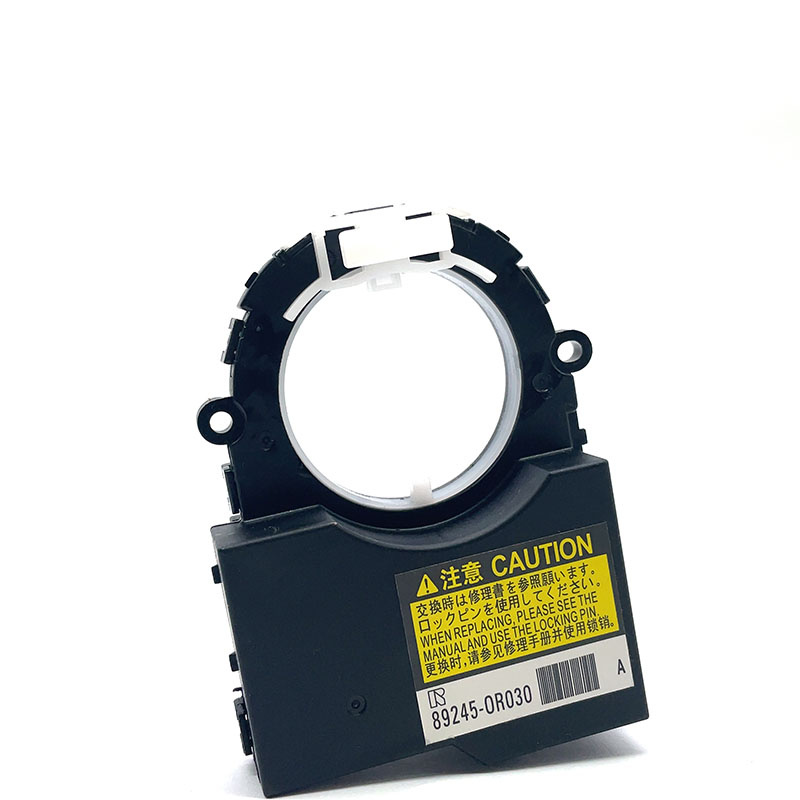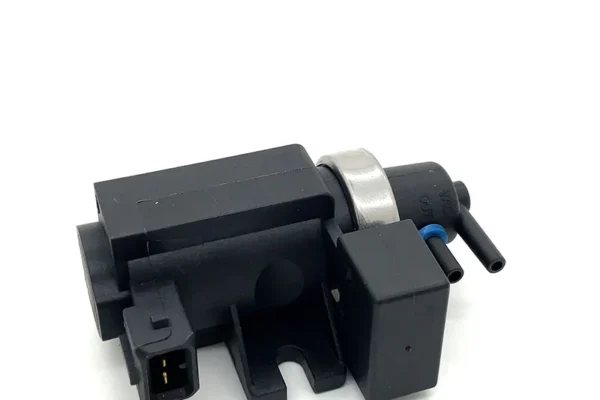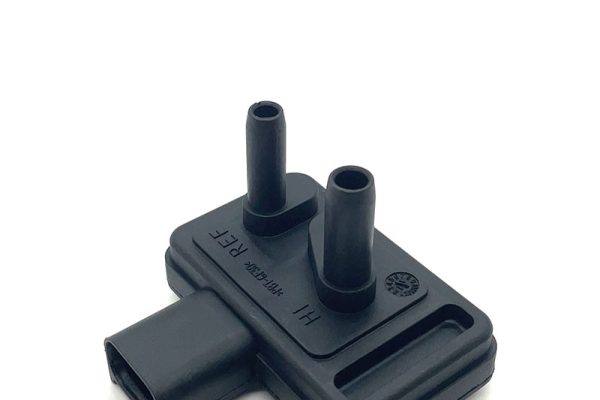In modern vehicle safety systems, precision and communication are crucial. Among various electronic components, the steering angle sensor plays a core role in coordinating multiple assistance systems. When the sensor fails, vehicle safety, steering stability, and driver control can all be affected. For B2B buyers who manage procurement, maintenance, or distribution of automotive parts, understanding bad steering angle sensor symptoms helps reduce troubleshooting time and avoid unnecessary part returns or warranty claims.
Understanding the Role of a Steering Angle Sensor
A steering angle sensor collects steering wheel position, direction, and rotation speed. The information is transmitted to vehicle control modules to support functions such as stability control, braking support, or lane-assist calibration.
This component is often integrated into the steering column or steering rack. Because it communicates with critical vehicle systems, once the sensor becomes inaccurate or fails, multiple warning lights and handling issues can appear.
Before analyzing the symptoms, it is helpful to briefly understand related replacement or troubleshooting processes. For more information, see our article What is a Steering Angle Sensor.
7 Common Bad Steering Angle Sensor Symptoms
When the steering angle sensor begins to malfunction, the vehicle system attempts to compensate by adjusting control modules. The following are the most typical symptoms reported during inspections or diagnostics.

1. Unstable or Incorrect Steering Wheel Position Reading
One of the first signs of failure is inaccurate steering wheel position feedback. During diagnostic scanning, values may jump or not align with the wheel’s actual angle. In commercial workshop or fleet maintenance situations, this causes unnecessary troubleshooting time and increases labor costs.
When the sensor does not return correct data, the system cannot determine steering direction, which affects downstream modules. In B2B operations focused on efficiency, this becomes a hidden cost due to extended repair time and repeated disassembly.
2. Warning Lights on the Dashboard
A bad steering angle sensor frequently triggers:
- Stability control light
- ABS warning
- Traction control warning
Warning lights do not directly indicate the root cause, which is why many technicians mistakenly replace other components first. Misdiagnosis wastes parts and delays maintenance planning for fleets or professional repair shops.
3. Electronic Stability System Becomes Unresponsive
Vehicle stability systems require directional information from the steering angle sensor. When input is missing or incorrect, the system may shut down temporarily to avoid incorrect correction commands. In logistics, ride-sharing fleets, or after-sales service centers, this symptom represents a serious safety concern.
Replacing the sensor can resolve the issue, but many workshops prefer to confirm the fault code before placing a purchase order.
4. Heavy Steering or Delayed Steering Response
A failing sensor sometimes causes steering assistance to engage late. Steering may feel heavier or less responsive than usual, especially during tight cornering or slow-speed maneuvers.
For businesses that provide service guarantees to customers, such handling of feedback becomes a direct reason for complaints. Keeping a stable supply of steering angle sensors in inventory reduces operational downtime.
5. Inconsistent Return-to-Center Behavior
When a steering wheel normally returns to center after a turn, the sensor helps the control system confirm the wheel position. A misaligned or malfunctioning sensor confuses the system, causing the steering wheel to return slowly or stop at an off-center angle.
This symptom is especially common when a vehicle has recently undergone wheel alignment or steering rack replacement.
6. ABS or Traction Control Engaging Unexpectedly
Traction systems calculate wheel speed differences and steering angle data simultaneously. If the sensor transmits incorrect angle readings, the system may think the vehicle is losing traction and activate ABS or traction control unexpectedly.
For businesses handling insurance repairs or warranty claims, this symptom often leads to disputes between drivers and service centers. In multi-product procurement scenarios, a stable supply of replacement parts is vital to ensuring smooth maintenance operations. Our company also offers a wide selection of Engine System Parts, enabling buyers to consolidate orders and reduce supply chain complexity.
7. Failed Vehicle Calibration After Alignment or Repair
After alignment services or suspension replacement, calibration is required to sync the sensor with the steering system. If a vehicle cannot complete calibration or repeatedly fails during testing, a bad steering angle sensor is the likely cause.
This is the most common diagnosis made during post-service scanning, especially in commercial fleet maintenance environments.
Why These Symptoms Matter for B2B Buyers
For procurement managers, distributors, and aftermarket service providers, understanding failure patterns helps:
- Reduce part returns caused by incorrect troubleshooting
- Improve workshop efficiency and customer satisfaction
- Build predictable inventory planning
- Strengthen B2B customer trust
Because steering angle sensors affect multiple driving safety systems, sourcing reliable suppliers protects both business reputation and long-term partnerships.

How B2B Buyers Should Evaluate Steering Angle Sensor Suppliers
When selecting a supplier, consider:
Production experience: Suppliers involved in design, development, and after-sales support can reduce compatibility risks.
Inventory & Delivery flexibility: The ability to handle diverse SKUs and no minimum order quantity simplifies purchasing for distributors and service centers.
Quality consistency: Stable production and quality management reduce warranty claims and improve service efficiency.
Support for rare and old vehicle models: Many B2B buyers deal with vehicles older than 10 years, so availability of rare parts becomes a competitive advantage.
For distributors or workshop procurement teams that handle multiple vehicle brands, sourcing flexibility becomes a major factor in supplier selection. We also supply Steering Angle Sensor for Toyota, enabling buyers to reduce sourcing fragmentation and keep purchasing efficiency high across different vehicle platforms.
Why Partner With a Professional Automotive Parts Supplier
Since 2007, YZHIDIANF has focused on automotive parts manufacturing, integrating industry and trade, design, development, production, and after-sales support. Customers benefit from:
- End-to-end solution from procurement to delivery
- Fast shipping due to strong inventory capability (including rare models)
- Convenient small order purchasing — no minimum order quantity
- Professional B2B-oriented service team
Stable quality and reliable delivery reduce operational downtime and strengthen customer trust.
Conclusion
Bad steering angle sensor symptoms affect multiple vehicle systems. B2B buyers who understand these signs are better prepared to assist workshops or customers during diagnosis. Reliable sourcing ensures stable inventory, fast fulfillment, and minimized warranty disputes.












